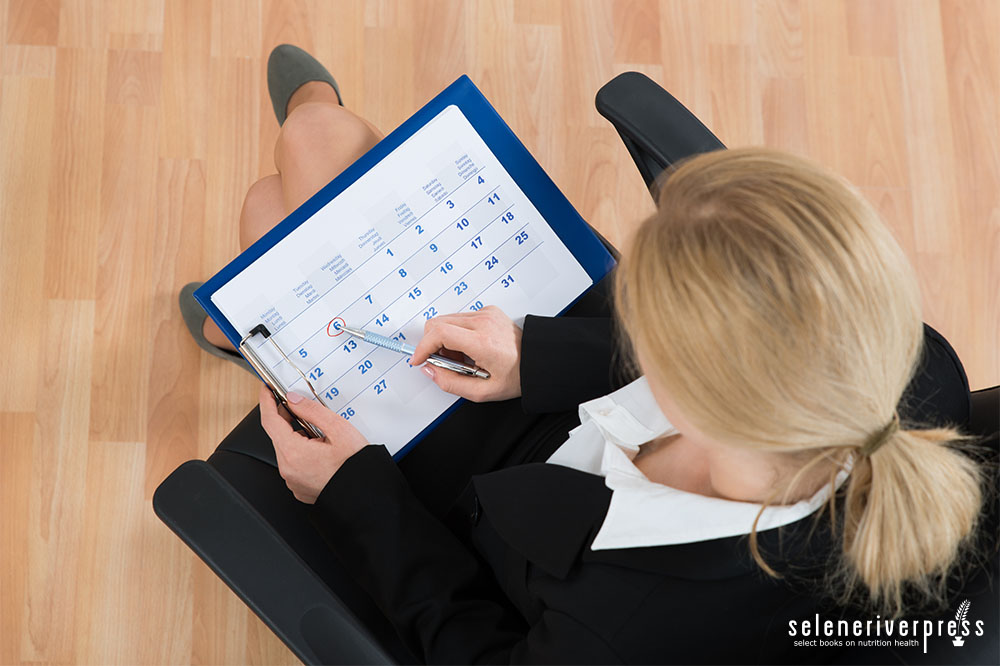I was recently reminded of an aspect of women’s health you don’t often hear discussed, a concept shared by Maria Emmerich in her book Secrets to a Healthy Metabolism. I read the book some time ago and hadn’t thought about it again until brainstorming post ideas for Women’s Health Month.
Emmerich is a nutritionist who hails from my home state of Wisconsin and has been writing books about the benefits of the Keto diet for years—it’s not a fad for her. She shares her story of digging into the power of nutrition to turn her own health around (typical self-healther) and helps others do the same.
Reacquainting myself with her book by browsing the earmarks I made, I came back to what just may be the missing link in a woman’s overall vitality. That missing link involves these questions: Should a woman’s workout routine be cyclical to maximize the benefits? Should she take her menstrual cycle into consideration when deciding the type of physical activity in which she will engage in on any given day?
In the past, we’ve talked about a woman’s innate reproductive instincts being a big cause of our difficulties losing weight, compared to men. But Emmerich builds on this in her book with a theory called “periodization.” She cites various studies showing how adjusting your workouts (and nutrition) to tie in with the natural biological changes of your cycle can give a boost to your results.
Bonus alert: it can also help with any PMS symptoms you have. Tell me more, you say? You got it!
The explanation assumes a 28-day cycle, broken down into the usual four phases: menstruation, follicular, ovulation, and luteal. Here’s a summary of what your workout should look like during each of them.
- Menstruation (Days 1-4) occurs with a drop in estrogen and progesterone levels, telling your uterus to start contracting to shed its lining. This is where those pesky cramps can kick in, which aerobic exercise can help. An intense cardio workout can dilate the blood vessels that supply oxygen to the uterine muscle, which means more oxygen and less pain from the contractions. The author recommends 30 minutes of high-intensity cardio the first two days—swimming, running, etc.—and the same on other days with cramping.
- Follicular (Days 5-13) begins when menstruation ends and estrogen levels increase. During this phase, your glycogen stores are used up faster than any other time during your cycle, and HIIT workouts are a really beneficial choice. Why? Because the intensity will deplete your glycogen stores more quickly, switching you over to burning fat. The author points out tha
 t while you can eat a few more carbs during this time, you need to make sure they are the complex variety, like nuts and veggies.
t while you can eat a few more carbs during this time, you need to make sure they are the complex variety, like nuts and veggies. - Ovulation (Day 14) is the day the dominant egg is released from the ovary, and your estrogen levels take a big jump. No specific workout information is tied to this singular day in the book, so go ahead and do whatever strikes your fancy.
- Luteal (Days 15-28) starts as soon as ovulation is complete. Your progesterone levels begin to rise, and the lining of your uterus increases, in case the egg is fertilized. Increased progesterone levels also mean increased basal body temperature, and bring on any PMS symptoms you deal with each month. According to the author, this is the time when a woman’s body relies more on fat for fuel, and she’s actually physically stronger. So, you can burn more fat by choosing longer workouts at a lower intensity, as well as seeing more gain from weight-training sessions.
If you’re like me, you’re looking at your calendar figuring out exactly which phase you’re in and making note of which workouts you should focus on in the coming weeks. After all, as Emmerich points out, “Most women will have 480 cycles in a lifetime. Taking advantage of these hormonal changes can help us reach our peak fitness levels.”
If you’re not seeing the results you want with your current workout regimen, consider giving the periodization theory a try. It might be exactly what your body needs.
Images from iStock/AndreyPopov (main), ttsz (post).



 t while you can eat a few more carbs during this time, you need to make sure they are the complex variety, like nuts and veggies.
t while you can eat a few more carbs during this time, you need to make sure they are the complex variety, like nuts and veggies.